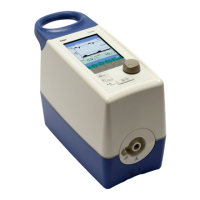Instructions for use Carina SW 3.2n 13
For your safety and that of your patients
WARNING
Risk of patient injury
If patients are dependent on ventilation, one of
the following parameters must be monitored:
– Expiratory tidal volume
– Expiratory minute volume
– End-tidal expiratory CO
2 concentration
If no patient monitoring is implemented, no
alarm will be generated in case of insufficient
patient ventilation.
Use suitable external monitors.
WARNING
Risk of increased CO2 rebreathing
If a breathing circuit with a leakage valve is
used, the flushing out of CO
2 may be reduced,
e.g., by the accumulation of secretions in the
leakage valve, without being noticed.
Check the leakage valves regularly and re-
place them if necessary.
Use suitable patient monitoring (capnogra-
phy) to detect increased CO
2 rebreathing.
WARNING
Risk of patient injury
If the inspiratory oxygen concentration differs
from the ambient air concentration, monitor-
ing of the inspiratory oxygen concentration
with adjustable high and low alarm limits is
needed.
Connect an external oxygen monitor comply-
ing with ISO 21647 or ISO 80601-2-55 to the
breathing circuit. Otherwise no alarm will be
generated if the actual inspiratory oxygen
concentration differs from the set oxygen con-
centration.
WARNING
Risk of patient injury
Because of the restricted monitoring func-
tions (no internal monitoring of the expiratory
minute volume), the device may not detect a
disconnection of the breathing hose or the pi-
lot line. This can occur particularly with low
PEEP values and the use of filters with high re-
sistance.
Only use the filters listed in the current list of
accessories.
CAUTION
Risk of patient injury
The device can apply a maximum of 120 L/min of
pure oxygen. If a high O
2 concentration with a
ventilation flow above 120 L/min is set, this O
2
concentration may not be reached.
Use external O
2 monitoring or reduce leakage.
CAUTION
Risk of overheating of the medical device
Sources of heat such as direct sunlight, radiant
heaters, or spotlights may cause the medical de-
vice to overheat.
Keep the medical device away from heat sources.
Only use the medical device in adequately venti-
lated rooms.
CAUTION
Risk of toppling over
Do not tilt the device more than 15° while in use to
ensure that it cannot topple over. When the device
is on the trolley, do not tilt the trolley more than
10°.

